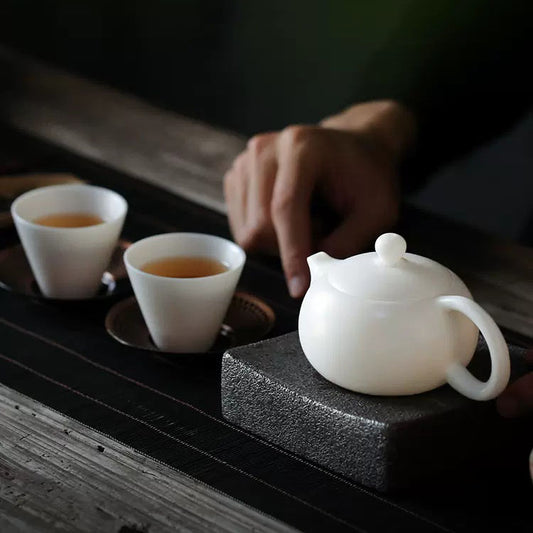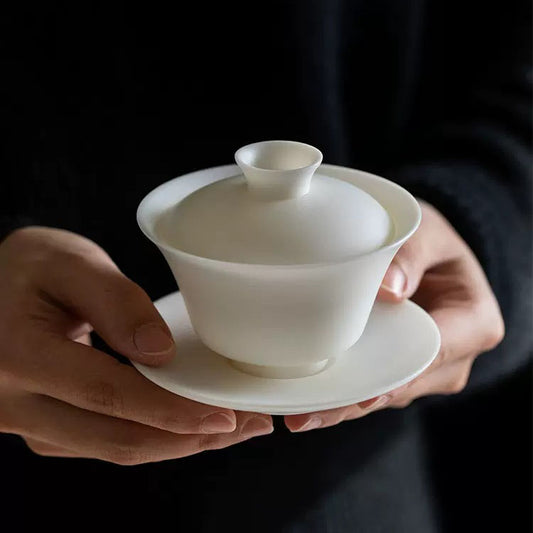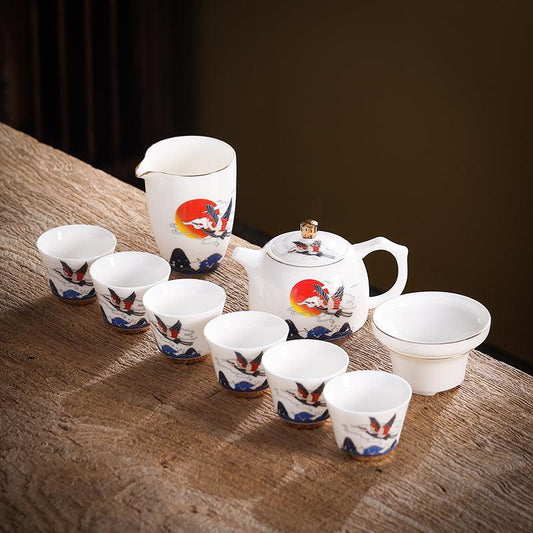Mutton fat jade porcelain is a type of porcelain that flourished during the Tang Dynasty. At that time, Wu Zetian believed that the typical white porcelain exhibited a thief-like luster, which was an ominous sign. She commissioned people in Dehua to develop a type of porcelain with a sub-glossy appearance. When the porcelain was finished, people discovered that this sub-glossy porcelain was not only beautiful, but also very moist, resembling the jade from Hetian, hence the name "Mutton fat jade porcelain.

The porcelain clay around Dehua is relatively soft, with low iron content and high potassium content. The porcelain made from this type of raw material has a clean and moist glaze that resembles congealed fat and beautiful jade. In sunlight, it appears semi-transparent with a pig oil-like texture, showing a pink or milky white luster, hence the name "Mutton fat jade ."

The production of Mutton fat jade porcelain is difficult and the process is complex. Typically, only one piece out of multiple pieces of porcelain can be produced, and the qualification rate for large pieces is even lower. The almost harsh manufacturing process and extremely low qualification rate highlight the scarcity and preciousness of Mutton fat jade porcelain.
Under the illumination of light, Mutton fat jade porcelain is clear and transparent, and the hand-painted patterns on the cup body are even more clear and vivid, like a dream.

In fact, the body of Mutton fat jade porcelain is not thin, but because of its excellent porcelain quality, it does not affect its light transmittance, but instead makes it more durable. In indoor light, Mutton fat jade porcelain is moist and delicate, and in dark places, strong light can make it even more transparent and bright.

Mutton fat jade porcelain not only symbolizes the "benevolence, righteousness, wisdom, bravery, and purity" of a gentleman's character, but also represents the secular emotions of "beauty, nobility, auspiciousness, tenderness, and tranquility." During the prosperous Tang Empire, it was used as a tribute and was renowned throughout the world. By the Qing Dynasty, Mutton fat jade porcelain had reached its pinnacle and became the most shining point in the long history of Chinese ceramics.





